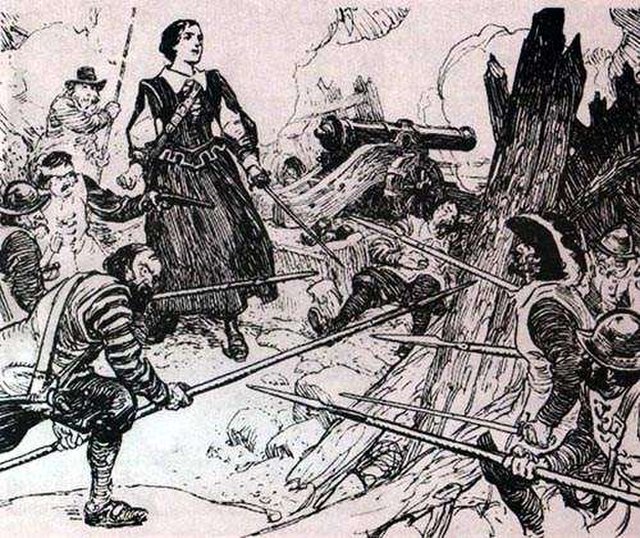The history of Nova Scotia covers a period from thousands of years ago to the present day. Prior to European colonization, the lands encompassing present-day Nova Scotia were inhabited by the Mi'kmaq people. During the first 150 years of European settlement, the region was claimed by France and a colony formed, primarily made up of Catholic Acadians and Mi'kmaq. This time period involved six wars in which the Mi'kmaq along with the French and some Acadians resisted the British invasion of the region: the French and Indian Wars, Father Rale's War and Father Le Loutre's War. During Father Le Loutre's War, the capital was moved from Annapolis Royal, Nova Scotia, to the newly established Halifax, Nova Scotia (1749). The warfare ended with the Burying the Hatchet ceremony (1761). After the colonial wars, New England Planters and Foreign Protestants immigrated to Nova Scotia. After the American Revolution, Loyalists immigrated to the colony. During the nineteenth century, Nova Scotia became self-governing in 1848 and joined the Canadian Confederation in 1867.

A plaque of John Cabot departing Bristol, England for Atlantic Canada (1497), installed at Sir Sandford Fleming Park, Halifax
Depiction of habitation at Port Royal in 1612
Depiction of Madame La Tour defending Fort Sainte Marie during the Acadian Civil War in 1645
Portrait of John Leverett. Leverett launched an expedition against Acadia on behalf of England in 1654.
João Álvares Fagundes was an explorer and ship owner from Viana do Castelo in Northern Portugal. He organized several expeditions to Newfoundland and Nova Scotia around 1520–1521.
Fagundes commemorative beside Halifax Harbour, Nova Scotia.





